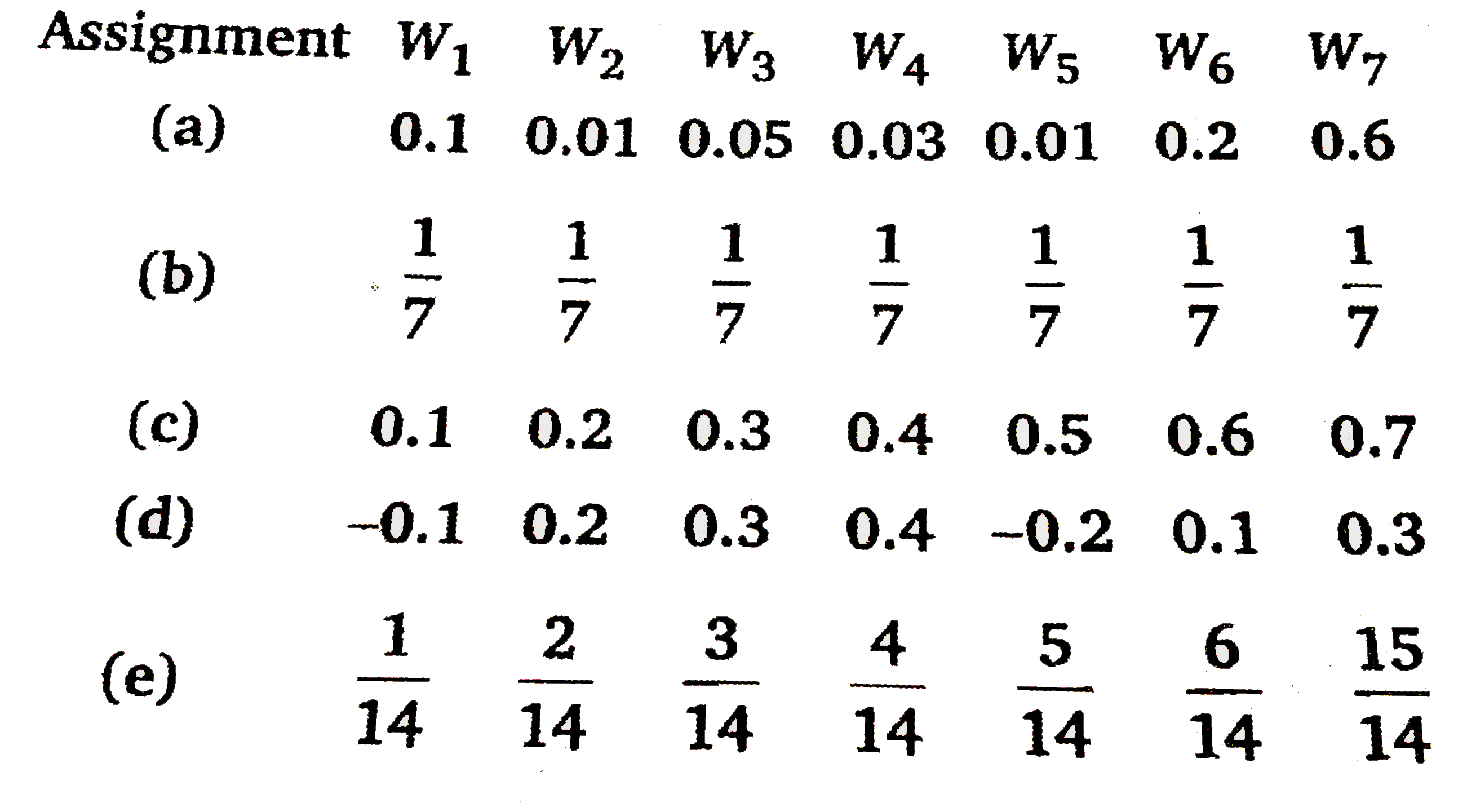There are two bags each containing 10 books all having different titles but of the same size. A student draws out books from the first bag as well as from the second bag. Find the probability that the difference between the books drawn from the two bags does not exceed 2.Solution in Bengali
Step by step video & image solution for There are two bags each containing 10 books all having different titles but of the same size. A student draws out books from the first bag as well as from the second bag. Find the probability that the difference between the books drawn from the two bags does not exceed 2. by Maths experts to help you in doubts & scoring excellent marks in Class 12 exams.
Updated on:21/07/2023Topper's Solved these Questions
- PROBABILITY I BOOK - CENGAGE PUBLICATIONCHAPTER - PROBABILITY I EXERCISE - Exercise 9.1
6 Videos
- PROBABILITY I BOOK - CENGAGE PUBLICATIONCHAPTER - PROBABILITY I EXERCISE - Exercise 9.2
19 Videos
- PROBABILITY I BOOK - CENGAGE PUBLICATIONCHAPTER - PROBABILITY I EXERCISE - JEE Advanced
7 Videos
- PROBABILITYBOOK - CENGAGE PUBLICATIONCHAPTER - PROBABILITYEXERCISE - All Questions
470 Videos
- PROBABILITY IIBOOK - CENGAGE PUBLICATIONCHAPTER - PROBABILITY IIEXERCISE - MULTIPLE CORRECT ANSWER TYPE
6 Videos
Similar Questions
Which of the following cannot be valid assignment of probabilities for outcomes of sample space S={W1,W2,W3,W4,W5,W6,W7}

View SolutionIf two fair dices are thrown and digits on dices are a and b, then find the probability for which ωab=1, (where ω is a cube root of unity).
View SolutionLet ω be a complex cube root unity with ω≠1. A fair die is thrown three times. If r1,r2andr3 are the numbers obtained on the die, then the probability that ωr1+ωr2+ωr3=0 is 1/18 b. 1/9 c. 2/9 d. 1/36
View SolutionA coin is tossed three times, consider the following events. A : ‘No head appears’, B: ‘Exactly one head appears’ and C: ‘Atleast two appear’. Do they form a set of mutually exclusive and exhaustive events?
View SolutionLet EandF be two independent events. The probability that exactly one of them occurs is 1125 and the probability if none of them occurring is 225. If P(T) denotes the probability of occurrence of the event T, then (a) P(E)=45,P(F)=35 (b) P(E)=15,P(F)=25 (c) P(E)=25,P(F)=15 (d) P(E)=35,P(F)=45
View SolutionA bag contains a total of 20 books on physics and mathematics. Ten books are chosen from the bag and it is found that it contains 6 books of mathematics. Find out the probability that the remaining books in the bag contains 2 books on mathematics.
View SolutionA bag contains a total of 20 books on physics and mathematics, Any possible combination of books is equally likely. Ten books are chosen from the bag and it is found that it contains 6 books of mathematics. Find out the probability that the remaining books in the bag contains 3 books on mathematics.
View Solutionतीन अभिन्न थैले A,B और C दिए गये है , प्रत्येक में दो - दो पुस्तके है। थैले A में दोनों गणित की पुस्तके है , थैले B में दोनों रसायन की पुस्तके है और थैले C में एक गणित और एक रसायन की पुस्तक है। एक विद्यार्थी यादृच्छया एक पुस्तक निकालता है। यदि पुस्तक गणित की है , तो दूसरी पुस्तक भी थैले A से गणित की निकलने की प्रायिकता ज्ञात कीजिए।
View SolutionThere are two bags each containing 10 books all haing different titles but of the same size A student draws out any number of books from first bag as well as from the second bag. Find the probability that the difference between the number of books drawn from the two bags does not exceed two .
View Solutionतीन अभिन्न थैले A, B और C दिए गए है, प्रत्येक में दो-दो पुस्तके है। थैले A में दोनों गणित की पुस्तके है, थैले B में दोनों रसायन की पुस्तके है और थैले C में एक गणित और एक रसायन की पुस्तक है। एक विद्यार्थी यादृच्छया एक थैला चुनता है और उसमे से यादृच्छया एक पुस्तक निकालता है। यदि पुस्तक गणित की है, तो दूसरी पुस्तक भी थैले A से गणित की निकलने की प्रायिकता ज्ञात कीजिए।
View SolutionA bag contains a total of 20 books on physics and mathematics. Ten books are chosen from the bag and it is found that it contains 6 books of mathematics. Find out the probability that the remaining books in the bag contains 2 books on mathematics.
View SolutionThere are two bags each containing 10 books all having different titles but of the same size. A student draws out books from the first bag as well as from the second bag. Find the probability that the difference between the books drawn from the two bags does not exceed 2.
View SolutionThere are two bags each containing 10 books all having different titles but of the same size. A student draws out books from the first bag as well as from the second bag. Find the probability that the different between the books drawn from the two bags does not exceed 2.
View SolutionA bag contains a total of 20 books on physics and mathematics, Any possible combination of books is equally likely. Ten books are chosen from the bag and it is found that it contains 6 books of mathematics. Find out the probability that the remaining books in the bag contains 3 books on mathematics.
View SolutionA bag contains 3 Maths books. 5 English books, and 4 Science books. One book is taken out from the bag. Find the probability that the book drawn is a
Maths book
View SolutionA bag contains 3 Maths books. 5 English books, and 4 Science books. One book is taken out from the bag. Find the probability that the book drawn is a
English book.
View Solution
